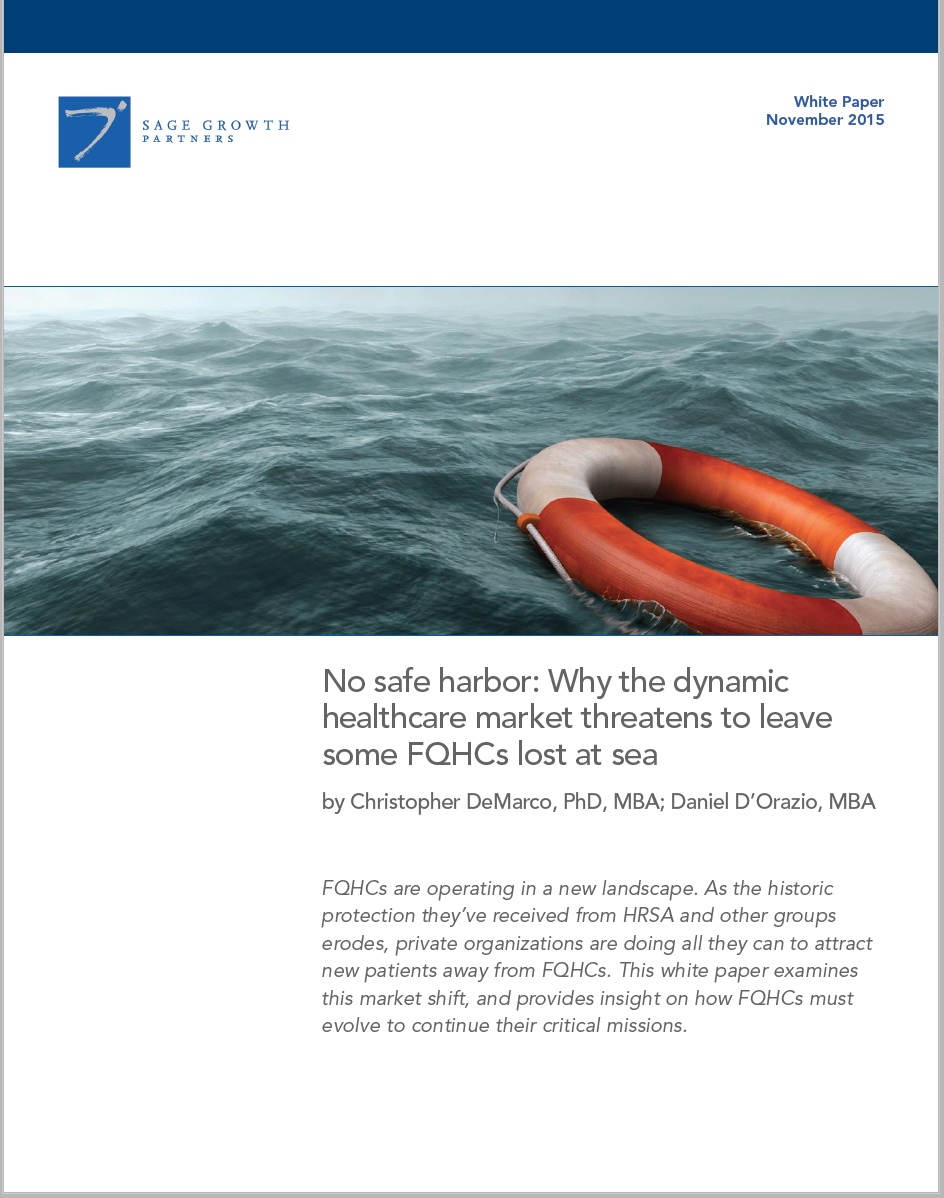
No Safe Harbor
Why the dynamic healthcare market threatens to leave some FQHCs lost at sea
By Christopher DeMarco, Ph.D, MBA; Dan D’Orazio, MBA
Sage Growth Partners
FQHCs are operating in a new landscape. As the historic protection they’ve received from HRSA and other groups erodes, private organizations are doing all they can to attract new patients away from FQHCs. This white paper examines this market shift, and provides insight on how FQHCs must evolve to continue their critical missions.
Face the New Landscape
As the Federally Qualified Healthcare Center (FQHC) movement celebrates 50 years of delivering quality care to underserved populations, it’s time to face a stark truth: the achievements of the past 50 years are not necessarily indicators of future success.
Why? A new competitive landscape.